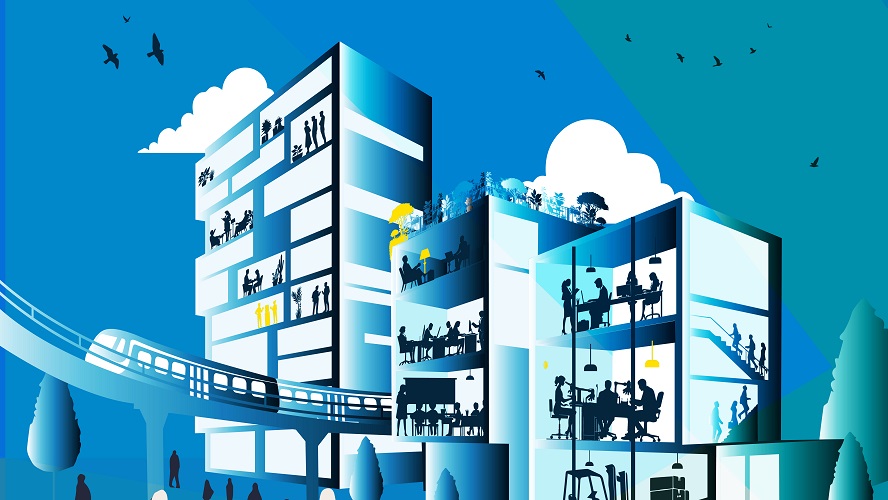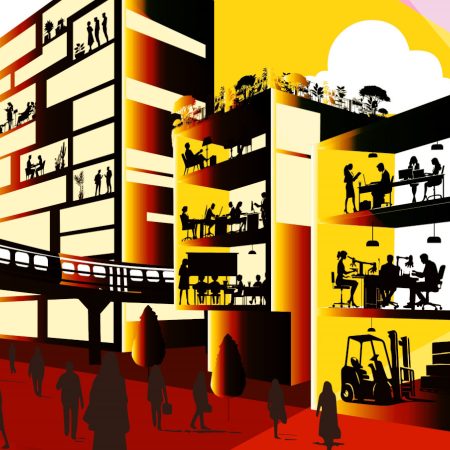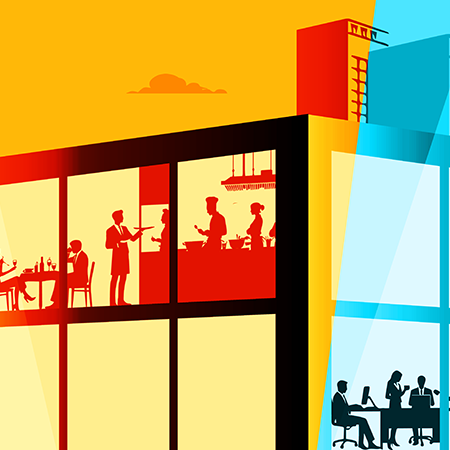The science behind collaboration
Recent research shows that when we collaborate, the electrical oscillations in our brains synchronise.
Dr Hannah Critchlow, the Cambridge University neuroscientist who led the experiment which supports this, argues that such brain synchronicity boosts a group’s ability to innovate and solve problems. Critically, groups achieve a significantly higher level of synchronicity when working together in person, rather than virtually.
Now that flexible working patterns have become the norm in many countries, however, the benefits of face-to-face collaboration are more difficult to harness. Some corporate leaders are proposing a subtle shift in working policies – to focus on the type of task in hand, rather than a set number of days employees should spend in the office.
For example, a company might recommend that employees come into the office when working together on a group project. Global architecture, engineering and consultancy firm Ramboll has already successfully adopted this type of strategy across its business.
Of course, not all employees can organise their work patterns to suit this approach. For many office-based workers, a typical day comprises a busy schedule of diverse tasks, including team projects and individual work.
This method of working also leads to high demand on meeting rooms and collaboration spaces, albeit this can be solved in part by flexible layouts and intelligent meeting room booking technology that optimises space utilisation.
To encourage a culture of collaboration in the office, designs should include flexible and informal breakout areas, connected by high-footfall walkways, which promote spontaneous and open-ended conversations. Coffee shop-inspired areas can also provide comfortable places to share ideas.
As Critchlow explains in her book Joined up Thinking: The Power of Collective Intelligence to Change Our Lives: “It may be true that breakout areas alone do not lead to collective intelligence, but it is also true that without them it definitely won’t happen.”
Work from rest, not rest from work
Neuroscience is also proving how short breaks improve cognitive performance. Research from the University of Sydney has shown that when we take “micro-breaks” of 5 minutes, our brain conducts essential processes that replenish attention, increase productivity, and promote creative thinking. Pondering a project in a relaxed environment can also promote connections across different areas of the brain, leading to more Eureka! moments.
Downtime in a calm environment during the day also reduces the negative effects of stress on the mind and body. High rates of information processing and a constant stream of stimuli, such as notifications, can result in a prolonged state of high alert that causes physiological stress. A common example is elevated levels of stress hormone cortisol, which can hamper mental processing and memory.
Research into how different built environments affect cognitive behaviour, led by Professor Colin Ellard at the University of Waterloo in Canada, has found that even when people say they feel relaxed, their physiological markers can often reflect the opposite. This is an important finding, because our physiology regulates our health.
Simple tweaks to office design can persuade employees to take short breaks. “Offices should provide thoughtfully designed quiet spaces for mental breaks and employees should be encouraged to use them,” says Yetta Reardon Smith, Director at Savills Workplace and Design. “Areas with soft lighting, biophilic elements, such as plants and natural timber, and comfortable seating can reduce physiological stress and replenish concentration.”
Air-purifying plants, which provide oxygen-rich air, not only replenish concentration levels but may help maintain a calm environment. Some studies into how the brain responds to colour suggest soft shades of green, brown, and blue promote relaxation.
Rooms to stimulate solo working
Spaces dedicated to individual work require a different approach. Research published this year by the University of Liège suggests short-term exposure to a defined range of elevated brightness levels can improve cognitive performance during complex tasks.
Temperature also plays an important role in concentration levels. A study by the Berlin Social Science Centre and USC Marshall School of Business in California revealed that women’s cognitive performance improves with a one-degree Celsius increase in temperature, whilst men do better in a cooler environment.
In open-plan layouts, acoustic design that minimises noise disturbance is also useful in preventing distractions. Visual distractions can be reduced by having dividing screens between seating areas and walkways.
Is work keeping you up at night?
Neuroscience is also driving advances in lighting design to support circadian rhythm. Lighting systems that transition to warmer, low-intensity light in the early evenings can help ensure employees who are working late don’t suffer a poor night’s sleep – and the knock-on effects on cognitive performance.
The growing influence of neuroarchitecture
In years to come, the ongoing revolution in brain-imaging technology, coupled with an increased focus on neuroarchitecture, promises to yield exciting discoveries that will further explain the impact of the built environment on the human brain. Expect these insights to have an ever-increasing impact on office design decisions.



